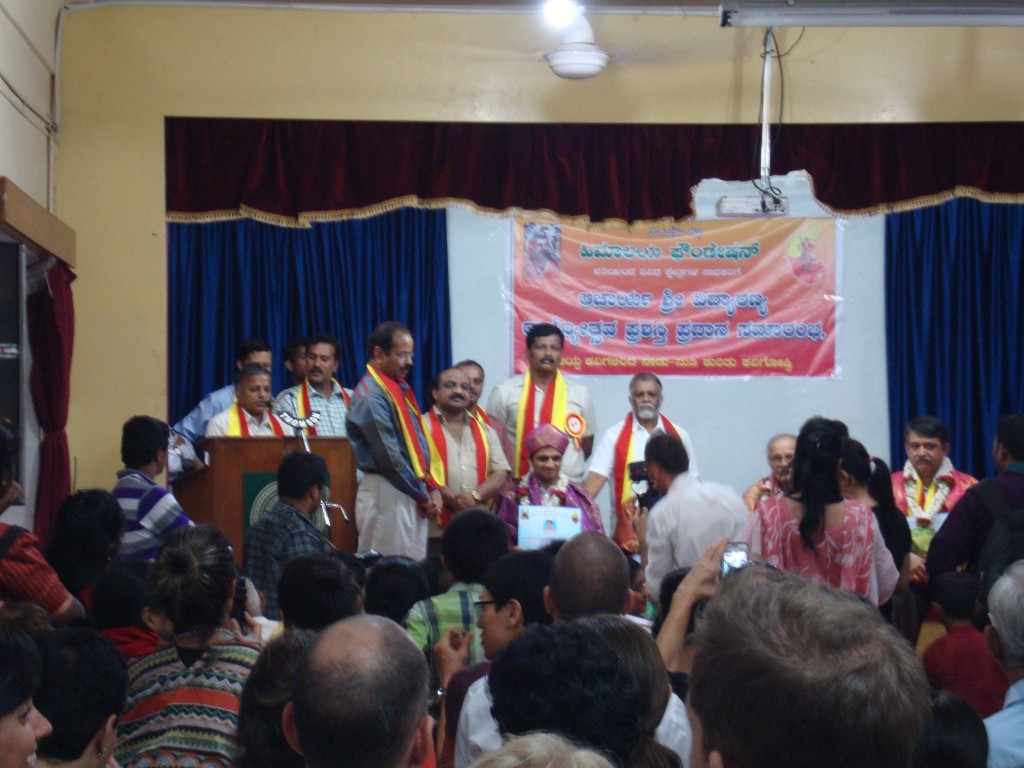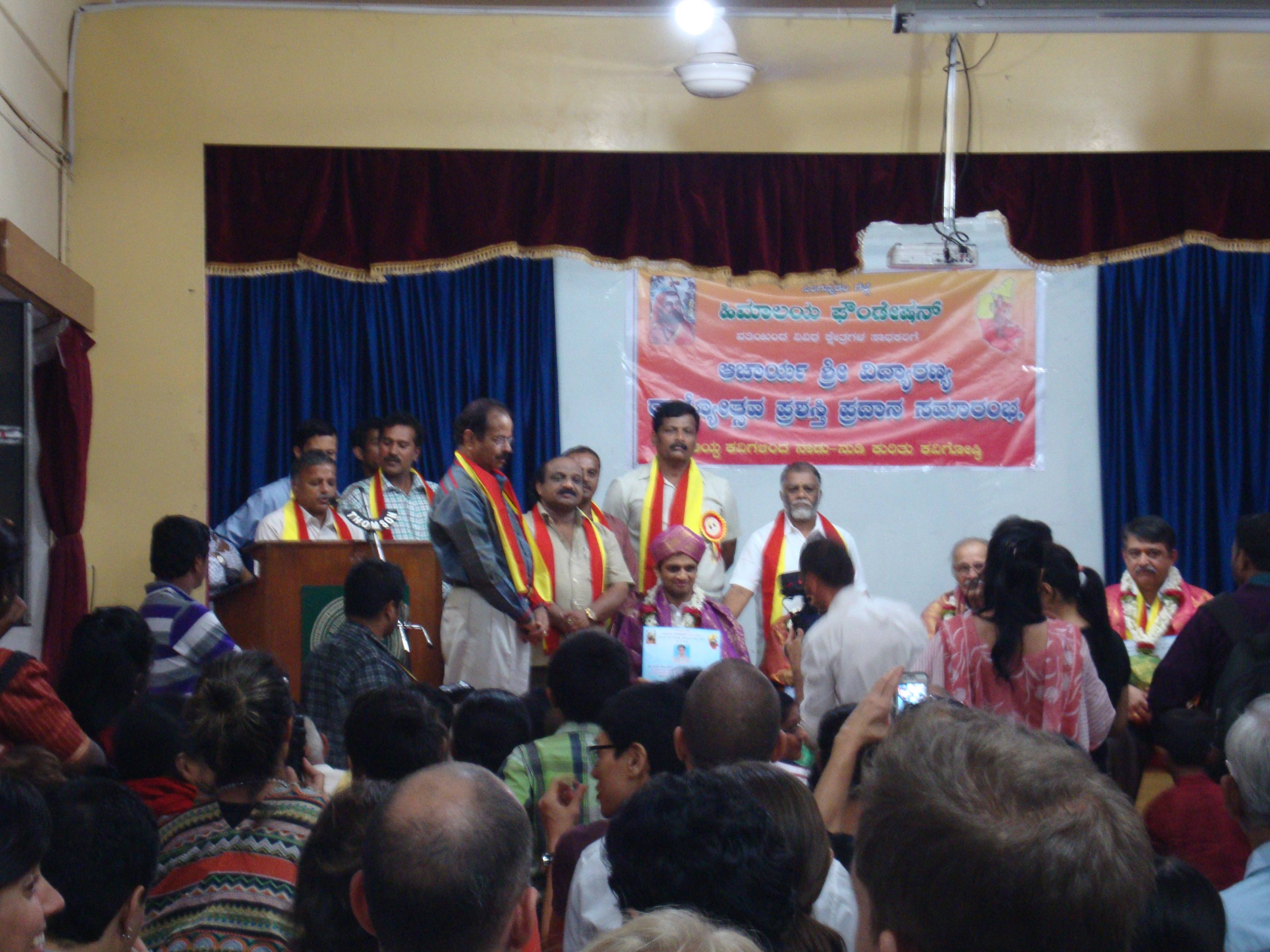Conference Notes December 1, 2013

Sharath began conference by quoting a passage from the Bhagavad Gita and noting that yoga is not new to us. It was old even when the Bagavad Gita was written! He said that when god created this universe, then yoga started.
In the Bhagavad Gita Krishna talks about parampara. This means the passing of knowledge from guru to student. A guru is no ordinary teacher…he is one who dispels darkness and gives proper knowledge: jnana. So, Sharath says, we don’t learn yoga through videos or books. Without a teacher it is impossible to transfer proper knowledge.
I’m always happy when he talks about the difference between cultures in the West and here in the East. He’s aware that most of us in the shala from the western world are used to questioning authority and he’s sympathetic to our experience but invites us to try to surrender. There is a difference in cultural norms from the west to the east. In the west it’s ok to question and rebel from the teacher, but in the east there is a surrender required, which can make practice so much sweeter.
To illustrate, Sharath tells the story of a day he was in a lot of pain from practicing and assisting Guruji with all the students in backbends. During his practice, Guruji came to him to drop him back and Sharath said “No I think I shouldn’t do backbending today.” Guruji smiled and said “no it’s ok, you do,” and somehow as he surrendered to him, he had no pain. It was one of his best practices!
He goes on to say that there’s too much attention on books and videos today that teach the technicalities of yoga. How to jump back and through. How to do asanas. This creates confusion. There should be more attention on the fundamentals of yoga: how to behave, how to act: the yamas and niyamas. These fundamentals make our spiritual foundations strong.
Of course asana is very important but we should understand why. Yoga is to bring health and stability to the body, it is sacred, supreme knowledge. Sharath begs us to leave from our mind the thoughts that a physically advanced practice means an advanced yogi. This is just not true!
There was also time for some student questions during conference. Someone asked how the parampara lineage in Ashtanga Yoga is designed to pick a successor. Sharath explained that it is not designed like that in the Ashtanga system…its not like an ashram, no successor is selected to take the place of the guru. He said (and he’s said it before, which I love) that if we have the knowledge, each one of us can be the successor of the Ashtanga lineage!
There was a question about the six enemies of yoga practice: lust, anger, attraction, pride, greed and jealousy. He makes sure to note that they are enemies to humans, not just to yoga. We are like a pearl covered in an oyster shell. We have six layers outside of us just waiting to be shelled off and to reveal the pearl within, the true authentic self. This takes a lot of hard work. It doesn’t come by taking a workshop or gaining an authorization. But if we are consistent we can make progress.
Sharath also took time to address one of Guruji’s famous quotes: “99% Practice, 1% Theory.” A lot of students have misunderstood the meaning of the quote, he said. It doesn’t mean that we should just do asanas all day and only think about a little bit of theory. On the contrary, it means whatever theory we learn, read, study or encounter, we should put to the text by practicing it applying it to our life. Only then, through practicing the theory is it useful to us.
Someone posed an excellent question, asking: can Ashtanga yoga change the world? I think all of us in the room knew the answer and were so happy to hear him affirm that yes, if practiced correctly, yoga can change the world. Tenants such as ahimsa (nonviolence) can be extremely important to creating world peace. Awareness of our natural world, the resources and their value is vital to saving the world. Again he talked about Guruji, how he never sought fame, but lived simply and did his practice. We too, he advises, should not chase fame and money, let it chase us…run away from it.
To close there was a question about money. Are finances an obstacle to learning yoga today? Sharath immediately answered yes, but said that the KPJAYI has a scholarship program and quite a few students are studying on scholarships. I think it’s important for shalas all over the world to follow suit, offering work exchanges, scholarships and other ways to help make yoga more accessible so that anyone and everyone who wants can become part of this life and possibly world changing yoga.
